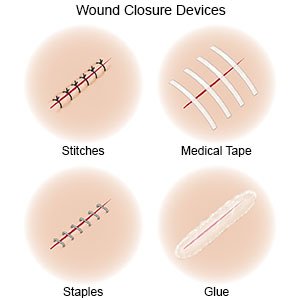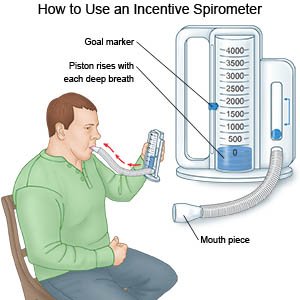Umbilical Hernia Repair
Medically reviewed by Drugs.com. Last updated on Aug 4, 2025.
AMBULATORY CARE:
What you need to know about an umbilical hernia repair:
An umbilical hernia repair is surgery to place the bulge near your belly button back into your abdomen. An umbilical hernia may be repaired if the hernia prevents blood flow to your organs, blocks your intestines, or causes pain. Open surgery or a laparoscopic method may be used to repair your umbilical hernia.
How to prepare for an umbilical hernia repair:
- Your surgeon will tell you how to prepare. Your surgeon may tell you not to eat or drink anything after midnight on the day of your surgery. Arrange to have someone drive you home when you are discharged.
- Tell your surgeon about all your current medicines. Your surgeon will tell you if you need to stop any medicine for surgery, and when to do so. You may be given antibiotics through your IV to help prevent a bacterial infection.
- Tell your surgeon about any allergies you have, including to medicines or anesthesia.
- Your surgeon will tell you if you need any tests before your surgery, and when to have them.
What will happen during an umbilical hernia repair:
- You will be given general anesthesia to keep you asleep and pain free during surgery. You may also be given local anesthesia to numb the surgery area and medicine to help you relax.
- During a laparoscopic hernia repair, your surgeon will make a small incision above your belly button. Your abdomen will be filled with carbon dioxide to lift the muscles away from your organs. This will help your surgeon see your hernia better and creates space to work. Your surgeon will insert a laparoscope. A laparoscope is a long, thin tube with a light and camera on the end. Other instruments will be inserted into 2 to 3 smaller incisions at different places on your abdomen.
- During an open hernia repair, your surgeon will make 1 incision near your belly button. The incision size will depend on the size of your hernia.
- In both types of hernia repair, tools are used to remove the hernia sac that contains bulging organs or abdominal tissue. Your surgeon will move your organs or tissue back into the correct place. Stitches may be used to close the opening in your abdominal wall. Mesh may be used to cover or plug the area. This will prevent the hernia from bulging out again.
- Your incisions will be closed with stitches, medical glue, or skin adhesive strips and covered with bandages.

What will happen after an umbilical hernia repair:
- You will be taken to a room to rest until you are fully awake. Healthcare providers will monitor you closely for any problems. Do not get out of bed until your provider says it is okay.
- You will be helped to walk around after surgery. Movement will help prevent blood clots.
- You may have pain, bloating, or nausea after your surgery. If you had a laparoscopic repair, you may have pain in your shoulder or near your ribs. This is from the carbon dioxide used during surgery. Incision site pain should improve within a few weeks. You may be given medicine to help manage the pain and nausea.
- You may be able to go home when your pain is controlled, you can drink liquids, and you can urinate.
Risks of an umbilical hernia repair:
You may bleed more than expected or get an infection. A pocket of fluid may form under your skin. This may heal on its own, or you may need surgery to remove it. Your umbilical hernia may return, or you may develop a hernia in a different location. Your organs, blood vessels, or nerves may be injured during surgery. Problems, such as a hole in your intestines, may happen during laparoscopic repair. This may lead to open surgery. You may get a blood clot in your leg, arm, or lungs. This may become life-threatening.
Call your local emergency number (911 in the US) if:
- You feel lightheaded, short of breath, and have chest pain.
- You cough up blood.
- You have trouble breathing.
Seek care immediately if:
- Your arm or leg feels warm, tender, and painful. It may look swollen and red.
- Blood soaks through your bandage.
- Your surgery area is red, swollen, or draining pus or fluid.
- Your abdomen feels hard and looks bigger than usual.
- Your bowel movements are black, bloody, or look like tar.
- You cannot have a bowel movement.
- You have severe abdominal pain.
- Your stitches come apart.
Call your doctor or surgeon if:
- You have a fever.
- Your pain does not get better after you take pain medicine.
- You develop a skin rash, hives, or itching.
- You have nausea or are vomiting.
- You have questions or concerns about your condition or care.
Medicines:
You may need any of the following:
- Prescription pain medicine may be given. Ask your healthcare provider how to take this medicine safely. Some prescription pain medicines contain acetaminophen. Do not take other medicines that contain acetaminophen without talking to your healthcare provider. Too much acetaminophen may cause liver damage. Prescription pain medicine may cause constipation. Ask your healthcare provider how to prevent or treat constipation.
- NSAIDs , such as ibuprofen, help decrease swelling, pain, and fever. This medicine is available with or without a doctor's order. NSAIDs can cause stomach bleeding or kidney problems in certain people. If you take blood thinner medicine, always ask your healthcare provider if NSAIDs are safe for you. Always read the medicine label and follow directions.
- Acetaminophen decreases pain and fever. It is available without a doctor's order. Ask how much to take and how often to take it. Follow directions. Read the labels of all other medicines you are using to see if they also contain acetaminophen, or ask your doctor or pharmacist. Acetaminophen can cause liver damage if not taken correctly.
- Take your medicine as directed. Contact your healthcare provider if you think your medicine is not helping or if you have side effects. Tell your provider if you are allergic to any medicine. Keep a list of the medicines, vitamins, and herbs you take. Include the amounts, and when and why you take them. Bring the list or the pill bottles to follow-up visits. Carry your medicine list with you in case of an emergency.
Care for your incision sites as directed:
You can shower 48 hours after your surgery. Ask when you can remove your bandages. Gently clean the sites with soap and water. Do not rub the sites. Do not take a bath, swim, or get in a hot tub until your healthcare provider says these are okay. Gently pat the areas dry and put on new, clean bandages, if directed. If you have skin adhesive strips over your incision sites, allow them to fall off on their own. If they do not fall off after 2 weeks, gently peel them off. Do not put powders or lotions on your incision sites. Check for signs of infection, such as redness, swelling, or pus.
Self-care:
- Choose high-fiber foods. Fiber may prevent constipation and straining during a bowel movement. This can prevent your hernia from returning. Foods that contain fiber include fruits, vegetables, legumes, and whole grains. You may need to take fiber supplements if your diet does not have enough fiber. Ask your healthcare provider if supplements are right for you.
- Drink liquids as directed. Liquids may prevent constipation and straining during a bowel movement. This will help prevent pressure on your incision site, and prevent another hernia. Ask how much liquid to drink each day and which liquids are best for you.
- Apply ice as directed. Ice helps prevent tissue damage and decreases swelling and pain. Apply ice on your incision site for 15 to 20 minutes every hour or as directed. Use an ice pack, or put crushed ice in a plastic bag. Cover the bag with a towel before placing it on your skin.
- Take deep breaths and cough. Do not smoke. This may decrease your risk for a lung infection. Take a deep breath and hold it for as long as you can. Push the air out of your lungs with a deep, strong cough. Take deep breaths and cough 10 times each hour. Hold a pillow tightly against your incision site when you cough to help decrease the pain. You may be given an incentive spirometer to help you take deep breaths. Put the plastic piece in your mouth and take a slow, deep breath. Then let the air out and cough. Repeat these steps 10 times every hour.
Nicotine and other chemicals in cigarettes and cigars can delay healing. It can also increase your risk for another umbilical hernia. Ask your provider for information if you currently smoke and need help to quit. E-cigarettes or smokeless tobacco still contain nicotine. Talk to your provider before you use these products.
Activity:
Physical activity, such as walking, will help prevent blood clots, move your bowels after surgery, and increase healing. Slowly do more each day. Do not lift, push, or pull more than 10 to 20 pounds for 4 to 6 weeks after surgery. This will reduce the risk of another hernia and help your incision site stay closed. Do not play sports for 2 to 3 weeks or as directed. Ask your healthcare provider when you can return to work, school, and your usual activities. Your provider will tell you about specific activities to avoid after your surgery.
Driving:
Do not drive for at least 1 week after surgery. Do not drive if you take prescription pain medication. Do not drive until it is comfortable to wear a seatbelt across your abdomen. Ask your healthcare provider when it is safe for you to drive.
Follow up with your healthcare provider as directed:
Write down your questions so you remember to ask them during your visits.
© Copyright Merative 2025 Information is for End User's use only and may not be sold, redistributed or otherwise used for commercial purposes.
The above information is an educational aid only. It is not intended as medical advice for individual conditions or treatments. Talk to your doctor, nurse or pharmacist before following any medical regimen to see if it is safe and effective for you.
Further information
Always consult your healthcare provider to ensure the information displayed on this page applies to your personal circumstances.
